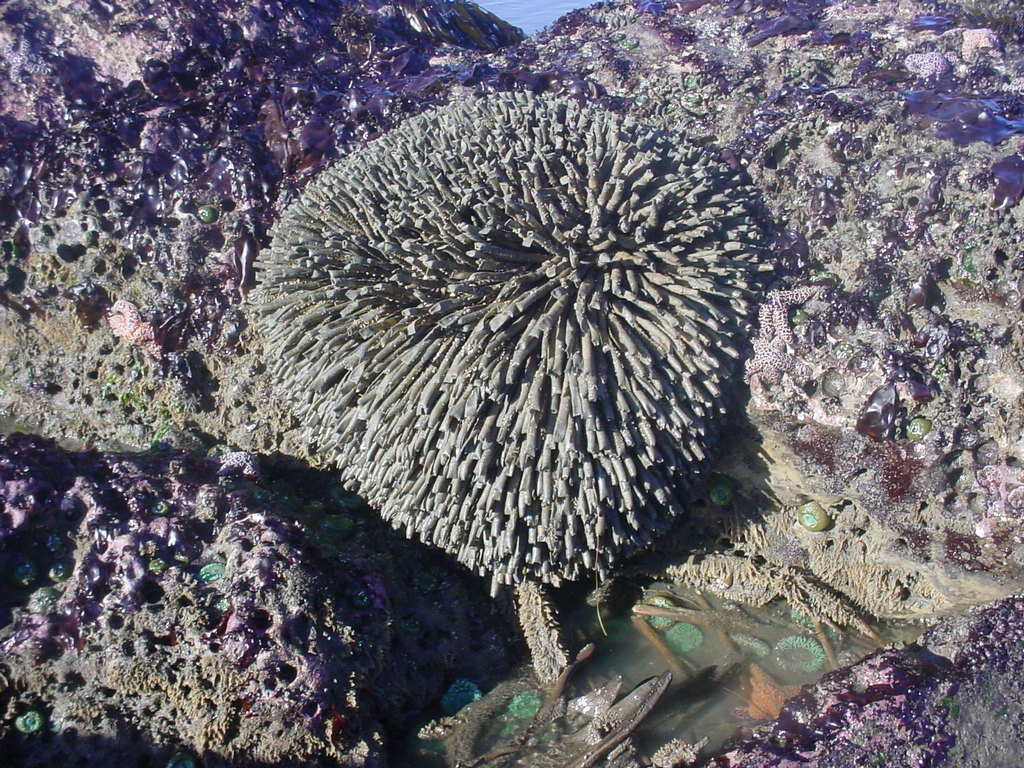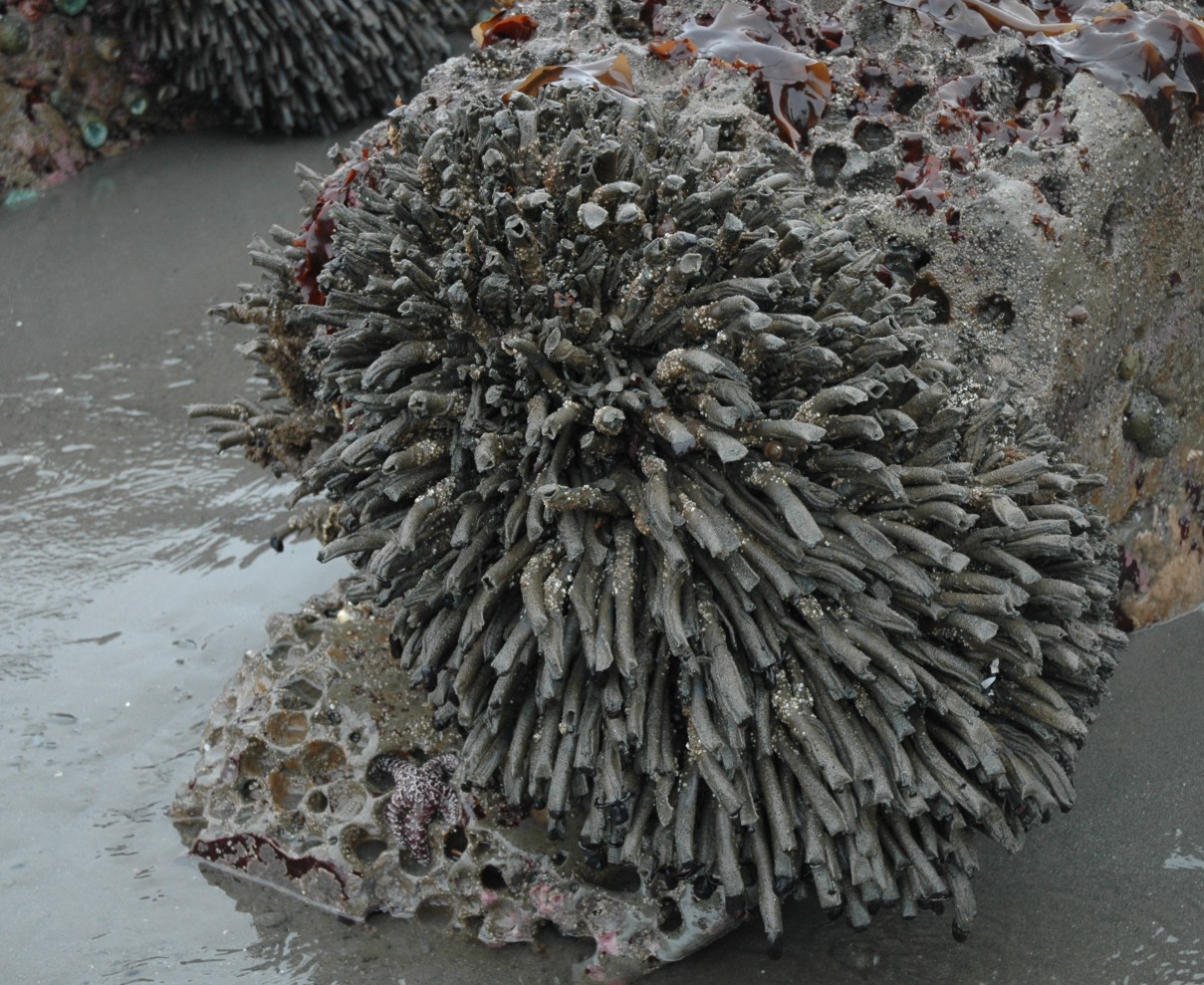Eudistylia vancouveri (Kinberg, 1867)Common name(s): Feather duster worm, Northern feather duster worm, Parchment tube worm, Plume worm |
|
| Synonyms: |  |
| Phylum Annelida
Class Polychaeta Order Sabellida Family Sabellidae |
|
| Eudistylia vancouveri at Beach #4 near Kalaloch | |
| (Photo by: Dave Cowles, July 2005) | |
How to Distinguish from Similar Species: In Eudistylia catharinae the notopodia of the first few abdominal segments are shorter than the tori of the posterior thoracic segments. In Eudistylia polymorpha the dorsal edges of both lobes from which the radioles originate have a cleft; plus its prostomial cirri are reddish brown to maroon and tipped with orange. Other species also do not have the distinctive green and maroon bands on their radioles.
Geographical Range: Alaska to central California
Depth Range: Low intertidal to 20 m
Habitat: Often in large clusters attached to crevices of boulders and bedrock, or on floats or pilings; and on vertical rock faces and surge channels in heavy surf.
Biology/Natural History: Although they do not have large ocelli as found in some other plumeworms, this species is highly light sensitive and will withdraw quickly into the tube if a shadow passes over it. Often anemones are found feeding near the top of the tube. This species may hybridize with Eudistylia polymorpha. Its blood contains chlorocruorin instead of hemoglobin. They can regenerate their radioles if a predator nips them off. However, they do not appear to be able to re-build a tube if removed from it (Merz, 2015).
The radioles
of members
of Family Sabellidae
contain a food groove
with a stepped cross-section that serves as a size-filter.
The smallest
particles, which fit in all the way to the bottom of the groove, are
usually
eaten. Moderate size particles, in the upper parts of the
groove,
are often glued together to build the tube. The largest
particles,
too large to fit within the groove, are usually rejected. The
radioles
are also used for gas exchange (like gills) but the circulatory pattern
within them is unusual. Instead of having afferent and
efferent vessels,
the radioles
have a
single branchial vessel in each radiole which the blood flows in and
out
of. Sabellids
possess giant nerve
fibers running down their body which allows them to retract rapidly
into
their tube if disturbed.
| Return to: | |||
| Main Page | Alphabetic Index | Systematic Index | Glossary |
References:
Dichotomous Keys:Kozloff 1987, 1996
Smith and Carlton, 1975
General References:
Carefoot,
1977
Gotshall,
1994
Harbo,
1999
Kozloff,
1993
Niesen,
1997
Ricketts
et al., 1985
Sept,
1999
Scientific
Articles:
Merz,
Rachel Ann, 2015. Textures and traction: how
tube-dwelling polychaetes
get a leg up. Invertebrate Biology 134:1 pp 61-77
Web sites:
General Notes and Observations: Locations, abundances, unusual behaviors:

Here are several more aggregations at Beach #4. Photo by Dave
Cowles, July 2006

This underwater photo of Eudistylia vancouveri on a
piling shows
the plumes (radioles)
fully extended.
Photo by Dave Cowles, July 2008 at Admiralty Beach
Authors and Editors of Page:
Dave Cowles (2005): Created original page